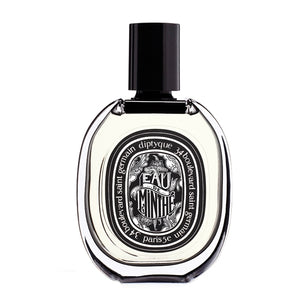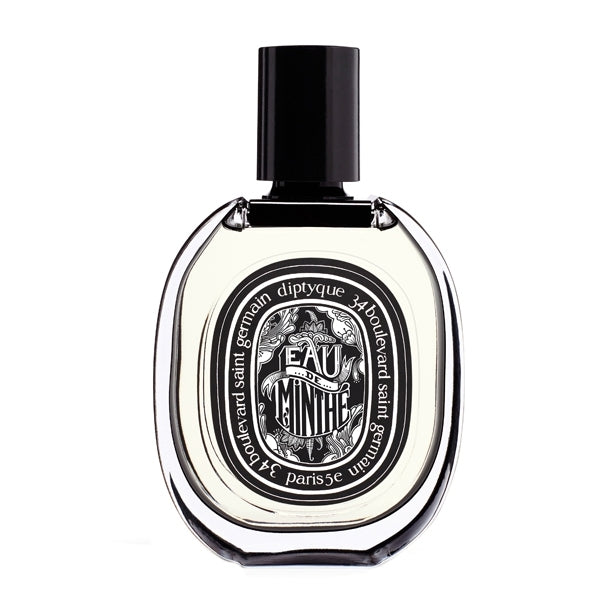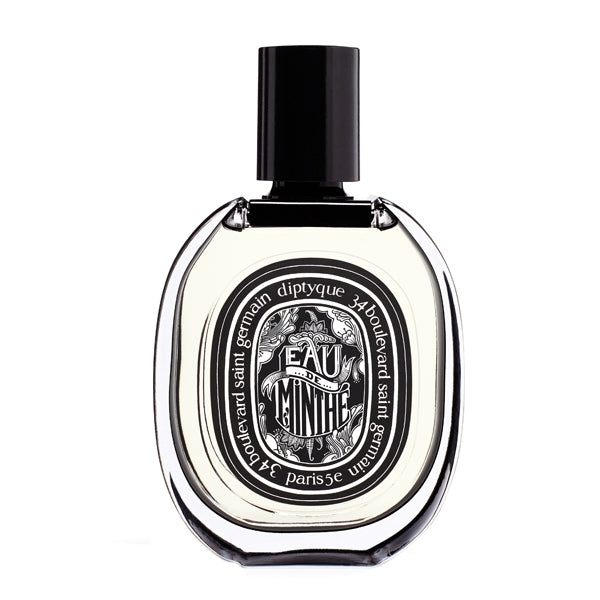In Greek mythology, fragrances often arise from a combination of romantic poetry and metamorphosis. Mint, for example, is said to owe its distinctive scent to the nymph Minthé, who was transformed into this aromatic plant by Hades, the god of the underworld. Eau de Minthé was inspired by this myth and, with its minty notes, offers a new interpretation of the emblematic fougère fragrance accord. At the heart of the composition, mint underscores the spirited floral notes of geranium with its fresh aroma. A hint of patchouli softens this duo with its warmth and depth. Eau de Minthé is a mystical dream that fills the air with a pulsating scent aura.
Myriam Badault about Eau de Minthé
The fragrance was inspired by an olfactive memory, a fragrant trail in the entrance of a building and an elevator! What stroke me was the contrast between the classic scent twisted with a modern and aromatic freshness, in my head I’ve memorized the sensation as an “enveloping” mint. The story of Eau de Minthé comes from that ingredient (mint). I like to tell stories and share my discoveries, mythology and ancient times are among our strong inspirations, and we found this very nice story about the nymph Minthé and her love affair with Hadès. I have a whole collection of comics based on myths, the young author is Clotilde Bruneau. We asked her to write the storyboard of the film. It was a very enriching experience.
Both modern and familiar, depending on your age! For someone born in the 70s it refers to very familiar masculine fragrance, for someone a bit younger, barbershop scents and freshness. I wanted to explore the “fougère” universe with a twist and some reference to our heritage (the english roots of the brand, the barber soap that was sold in the Saint Germain stores in the early 60’s…) and my obsessive idea to use mint.
I chose to work with Fabrice because I knew his love for this olfactive universe. We have known each other for 15 years, and he often told me stories about his father work (Fabrice’s father is a perfumer), the affective link with the “fougère” family and all the memories it brings back. It is like a “Madeleine de Proust”, and in a way the opportunity to write another story in a contemporary way. Moreover, I feel that Fabrice is very good at “thinking out of the box” and revamping icons just as he did with the tuberose in Do Son.
There is no particular reason. As you may know we do not conduct market surveys, diptyque remains leaded by creation. We do not have something similar in our collection, it was a new olfactive landscape to be explored.
What are the key ingredients?
Usually, diptyque fragrances have an olfactory accident. Which one did you choose for Eau de Minthé and why?
Fabrice Pellegrin : Mint of course, for the modernity, but also the more traditional geranium and patchouli duet to follow the authentic fougère structure. I chose rose oxide as an even more modern “olfactory accident”. It brings its vibrant and modern aura to compose a new olfactory twist.




